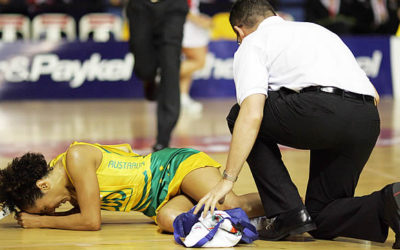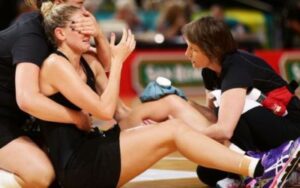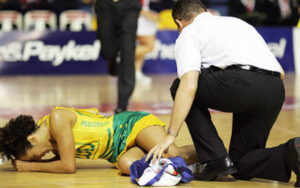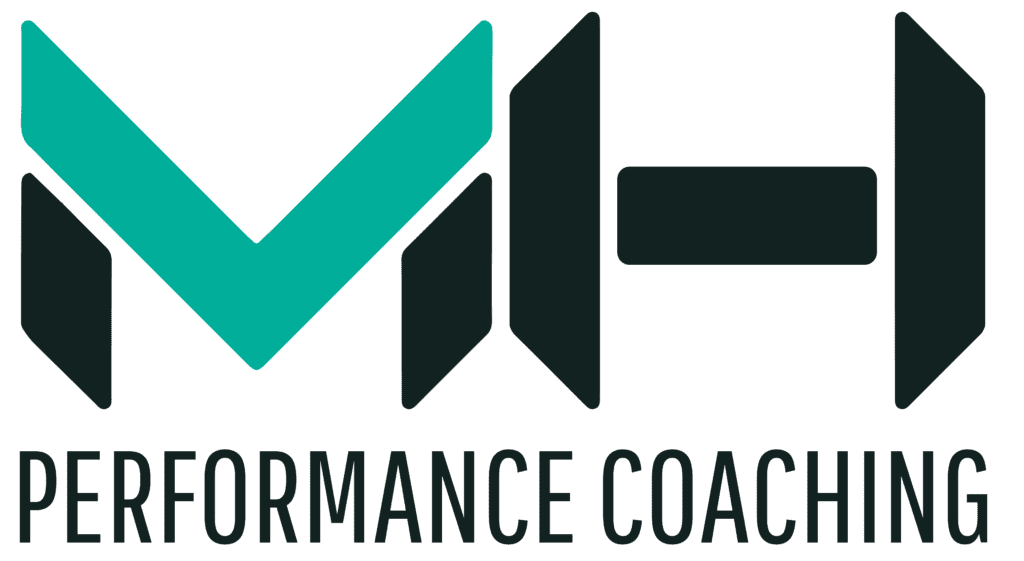Parts One and Two have expanded on the impact anatomical and hormonal factors have on the young female netball athlete. Part 3 focuses on the neuromuscular factors pertaining to female athletes and their risk of injury.
Neuromuscular factors refer to the functioning of the nerves and muscles within the human body, and how they work together to control movement. Poor neuromuscular control and lower limb biomechanics is the main reason for ACL injury in female athletes (1 – 5), such as young netballers. There are four important areas of interest related to neuromuscular factors predisposing young female netball players to injury. These areas of interest include knee valgus motion, knee flexion angle, co-activation of the hamstring and quadriceps muscle, hip kinematics, and muscle strength. A review to expand your understanding of how these factors impact your young female netballers in being prone to injury is as follows.
Table of Contents
ToggleKnee Valgus Motion
Knee valgus motion is commonly referred to as knocked knees (the movement of the knees towards each other). The measurement of knee valgus angles during landing shows females land with a significantly higher knocked knee motion at ground contact (6). Compared to males, females tend to land with more knee valgus motion. (4, 6-8). In regards to movements related to netball, when jumping and landing, side stepping, and completing shuttle runs females land with greater knee valgus across all movements compared to males. Similarly, when landing from forwards, backward, and vertical jumps, which are also involved in the sport of netball knee valgus motion is increased.
Knee valgus is a primary predictor of ACL injury risk, specifically for female athletes. During landing on one or both legs, females show knee valgus movement. Females who sustain an ACL injury will most likely have landed with knee valgus motion, which puts increased strain on the ACL, predisposing the knee to injury.
It is evident that female netballers who land with increased knee valgus motion across all movements predispose themselves to injury, particularly ACL rupture.
Knee Flexion Angle
The angle of knee flexion (knee bending) in female athletes differs from male athletes, as females tend to land with less knee bend (9). Having decreased knee bend on landing can increase anterior shear forces (force on the kneecap) and thus a greater load on the ACL, increasing injury risk (4).
Young female athletes place a higher reliance on their ankle musculature as opposed to hip musculature to absorb forces upon landing, requiring them to have their knees in a more straightened position during landing (11). The majority of athletes who sustain an ACL injury are reported to have close to completely straightened knees at the point of injury (10).
Landing with a straightened knee results in higher forces applied to the knee joint due to the muscles being in an unfavorable position to safely absorb landing forces. These increased forces are transferred directly to the joints and ligaments of the lower limb, in particular, the ACL, heightening the risk of injury (2).
Young female netballers who land with their legs straight rather than bending at the knee and absorbing forces as they land, increase their risk of injury.
Co-activation of the hamstring and quadriceps muscle groups
The muscles around the knee joint – quadriceps and hamstring – help to stabilize the ligaments by decreasing large external loads applied to the joint that can increase injury potential (11). The co-activation of these two muscles protects the knee against adduction (movement towards the midline) and valgus motion. (11, 1) As you land your hamstring muscles should activate beforehand to balance the forward motion of the shinbone (tibia) relative to the thighbone (femur), in order to protect the ACL (11). If the hamstrings are weak, their co-contraction with the quadriceps will be reduced and cause knee valgus motion and thus loading on the ACL (11, 4).
Females generally land with greater quadriceps activation and reduced hamstring activation compared to males. During movements involved in netball such as running, side cutting, and crosscutting this is particularly evident.
The imbalance in the activation of the quadriceps and hamstring muscles develops following puberty, as prior to this there is no difference between males and females. During maturation knee straightening strength increases yet knee-bending strength is maintained or weakens. This change is what makes female netball athletes more prone to injury, such as ACL rupture.
Hip Kinematics and Muscle Strength
Hip kinematics refers to hip movement biomechanics and has been shown to cause increased knee valgus motion upon landing in female netball athletes, increasing the forces placed on the ACL and the possibility of sustaining an injury (13-15).
Excessive hip adduction (moving the thigh towards the body) and the internal rotation of the upper leg at the hip contribute to the increased knee valgus. Whilst weight bearing your hip abductors (muscles that move the thigh away from the body) and external rotators activate to prevent hip adduction and internal rotation. From occurring and again reducing knee valgus movement (16).
Female athletes land with decreased gluteus maximus (GM) activation and increased quadriceps activation in single and double-leg landing movements, common in netball activity (17). GM is a hip muscle and its activation and strength are connected to knee valgus motion as it works to externally rotate the hip to aid hip abduction and stabilize the knee joint (14).
Hip muscle weakness contributes to poor motion of the lower body. If female netball athletes have weakened hip strength and decreased muscle activation during loading such as when landing, this causes the hip muscles to adduct and rotate inwards resulting in knee valgus motion.
Females are more prone to injury compared to their male counterparts due to anatomical, hormonal, and neuromuscular factors that differ between the sexes throughout maturation. Although some factors are un-modifiable it is best to focus on those we can, to ensure our young female netball athletes reduce their risk of injury and allow them to keep playing effectively and efficiently into the future. Encourage hamstring and gluteus maximus strengthening as well as proper landing techniques during training and gameplay to reduce neuromuscular deficits that contribute to injury risk.
References
- Hewett TE. Biomechanical Measures of Neuromuscular Control and Valgus Loading of the Knee Predict Anterior Cruciate Ligament Injury Risk in Female Athletes: A Prospective Study. American Journal of Sports Medicine 33: 492-501, 2005.
- Hewett TE, Lindenfeld TN, Riccobene JV, and Noyes FR. The effect of neuromuscular training on the incidence of knee injury in female athletes. A prospective study. The American Journal of Sports Medicine 27: 699-706, 1999.
- Hewett TE, Myer GD, and Ford KR. Decrease in neuromuscular control about the knee with maturation in female athletes. The Journal of Bone and Joint Surgery 86-A: 1601-1608, 2004.
- Hewett TE, Myer GD, and Ford KR. Anterior cruciate ligament injuries in female athletes: Part 1, mechanisms and risk factors. The American Journal of Sports Medicine 34: 299-311, 2006.
- Myer GD, Ford KR, Palumbo J, and Hewett TE. Neuromuscular Training Improves Performance and Lower Extremity Biomechanics in Female Athletes. Journal of Strength & Conditioning Research 19: 51-60, 2005.
- Ford KR, Myer GD, and Hewett TE. Valgus’s knee motion during landing in high school female and male basketball players. Medicine and Science in Sports and Exercise 35: 1745-1750, 2003.
- Jacobs CA, Uhl TL, Mattacola CG, Shapiro R, and Rayens WS. Hip Abductor Function and Lower Extremity Landing Kinematics: Sex Differences. Journal of Athletic Training 42: 76-83, 2007.
- Myer GD, Ford KR, Di Stasi SL, Barber Foss KD, Micheli LJ, and Hewett TE. High knee abduction moments are common risk factors for patellofemoral pain (PFP) and anterior cruciate ligament (ACL) injury in girls: Is PFP itself a predictor for subsequent ACL injury? British Journal Sports Medicine 49: 118-122, 2014.
- Chappell JD, Yu B, Kirkendall DT, and Garrett WE. A comparison of knee kinetics between male and female recreational athletes in stop-jump tasks. The American Journal of Sports Medicine 30: 261-267, 2002.
- Boden BP, Dean GS, Feagin JA, Jr., and Garrett WE, Jr. Mechanisms of anterior cruciate ligament injury. Orthopedics 23: 573-578, 2000.
- Decker MJ, Torry MR, Wyland DJ, Sterett WI, and Richard Steadman J. Gender differences in lower extremity kinematics, kinetics and energy absorption during landing. Clinical Biomechanics 18: 662-669, 2003.
- Besier TF, Lloyd DG, and Ackland TR. Muscle activation strategies at the knee during running and cutting maneuvers. Medicine and Science in Sports and Exercise 35: 119-127, 2003.
- Brent JL, Myer GD, Ford KR, Paterno MV, and Hewett TE. The Effect of Age and Sex on Isokinetic Hip Abduction Torques. Journal of Sport Rehabilitation 22: 41-56, 2013.
- Hollman JH, Ginos BE, Kozuchowski J, Vaughn AS, Krause DA, and Youdas JW. Relationships between knee valgus, hip-muscle strength, and hip-muscle recruitment during a single-limb step-down. Journal of Sport Rehabilitation 18: 104-117, 2009.
- Powers CM. The influence of abnormal hip mechanics on knee injury: a biomechanical perspective. The Journal of Orthopaedic and Sports Physical Therapy 40: 42-51, 2010.
- Bandholm T, Thorborg K, Andersson E, Larsen T, Toftdahl M, Bencke J, and Holmich P. Increased external hip-rotation strength relates to reduced dynamic knee control in females: paradox or adaptation? Scandinavian Journal of Medicine & Science in Sports 21: e215-221, 2011.
- Zazulak B, Ponce P, Staub S, Medvecky M, Avedisian L, and Hewett T. Gender comparison of hip muscle activity during single-leg landing. Journal of Orthopaedic & Sports Physical Therapy 35: 292-299, 2005.





